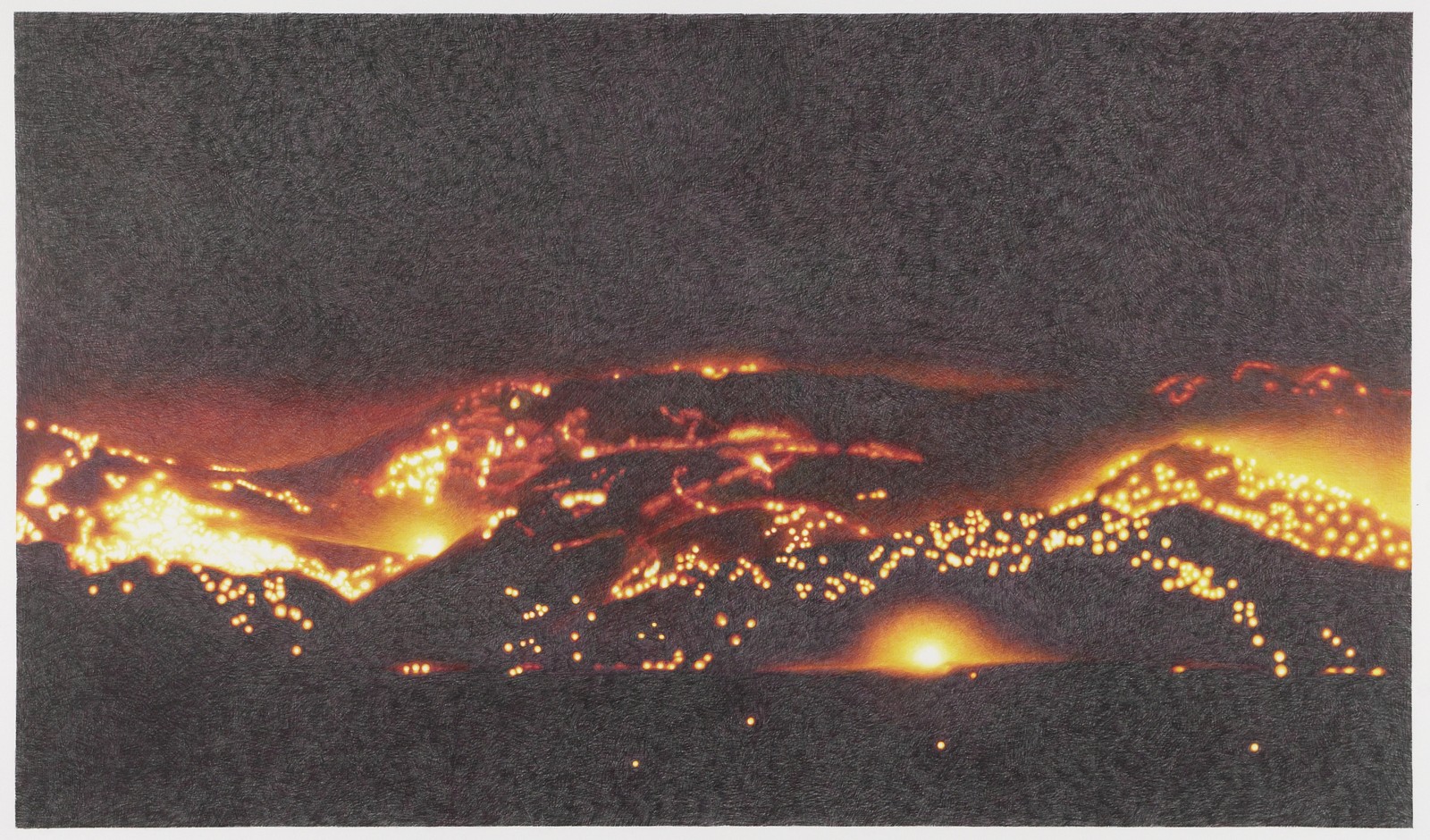
Thus understood, the spectacular aspect becomes the landscape’s indispensable feature. The motifs depicted in Elsner’s drawings however, have an exceptionally stage-like aura.
Beginning in 1950’s, observing nuclear tests conducted by the U.S. army in the Nevada desert has become one of tourist attractions offered by Las Vegas – a city situated as close as 100 km from the military nuclear test ground.
Above all, Elsner is interested in the process of aestheticizing that takes place through photography and mass media. Copying the archive and press photographs, the artist enlarges his drawings to a bigger and bigger scale and, using the press mechanisms, intensifies the sensation and seduces the viewer with the scale of the image – the bigger something is in a newspaper the more important it is. Carefully selected stills used by Elsner illustrate the terror of fires and nuclear tests as a spectacular, not traumatic, value. At the same time however, the artist raises the very same question, that of responsibility for manipulating the image, in the realm of art. Is it not art that has served, and often serves, as a tool for aestheticizing the world?
